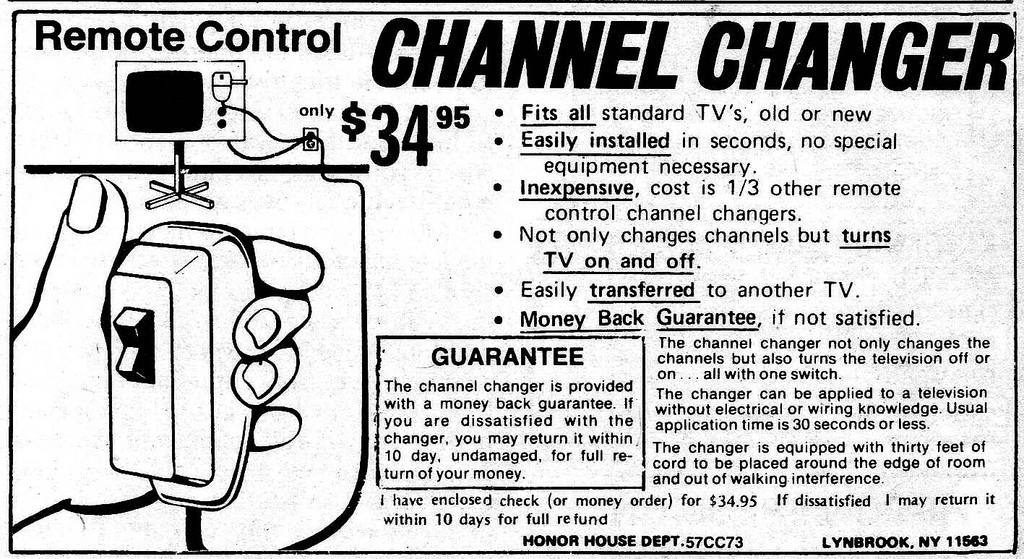It’s the time of year for saving money!
Yesterday I received an email from Stellé Audio announcing their support for golfer Steve Strickland on the US PGA tour. If you’ve never heard of Stellé, join the club. I had to visit their website to see what they make and where they sell it – which is blingy wireless audio available at Neiman Marcus. Not exactly my beat, but I have to hand it to Stellé – with this one single marketing effort they have gotten my attention, which is more than I can say for the ad campaigns from almost every high-performance audio firm I know of.
 It’s gotten to the point that some segments of the high-performance audio industry don’t even bother to advertise ANYWHERE anymore. Many of the new headphone companies feel that seeding a bunch of earphones to “bloggers” and having them write about their experiences, are adequate for PR and marketing. For the small (relative to the rest of the world) market of enthusiast headphones, that may be enough. But if a company want to be a real force in whatever industry they embark upon, there has to be advertising.
It’s gotten to the point that some segments of the high-performance audio industry don’t even bother to advertise ANYWHERE anymore. Many of the new headphone companies feel that seeding a bunch of earphones to “bloggers” and having them write about their experiences, are adequate for PR and marketing. For the small (relative to the rest of the world) market of enthusiast headphones, that may be enough. But if a company want to be a real force in whatever industry they embark upon, there has to be advertising.
Looking through most of the ads in the major US Hi-Fi publications, Stereophile and The Absolute Sound, and trying to set aside their design to focus on their content (which with some is difficult because often the graphic design of the ads themselves are so cacamorphic) You see several tried and true methodologies, none of which is less than 75 years old. First is the “show it and they will come” methodology, where you use a “sexy” picture of a component coupled with the manufacturer’s name. This works fine if you are a well-established industry leader, a household name that everyone knows…I can think of only a handful of companies who might actually be in this lofty position. but even the most iconic (which is probably McIntosh) falls short of being a household name (unless you add another A, at which point it’s someone else entirely.)
 But most Hi-Fi ads don’t have two few words – they have too many. The second most-common bad ad is one with too much information jammed into too small a space. If you can enumerate every single possible feature in a one page (or even half-page) ad why bother with a spec sheet or even a web page? When it comes to copy, there is an ideal amount – just enough to elicit interest. Just as no one wants to know your complete romantic history on a first date, potential customers don’t need or want to know a company’s entire corporate philosophy in one ad.
But most Hi-Fi ads don’t have two few words – they have too many. The second most-common bad ad is one with too much information jammed into too small a space. If you can enumerate every single possible feature in a one page (or even half-page) ad why bother with a spec sheet or even a web page? When it comes to copy, there is an ideal amount – just enough to elicit interest. Just as no one wants to know your complete romantic history on a first date, potential customers don’t need or want to know a company’s entire corporate philosophy in one ad.
 I briefly touched on bad design. When it takes more than three seconds to find the name of the manufacturer in an ad it is a terrible ad. And do I really need to mention that in 2017 using a pretty young woman to sell Hi-Fi gear is positively Pre-Cambrian in terms of social advancement? Using an image of a couple enjoying their music is a “lifestyle image” which is a very common ad theme that I see occasionally, even in Hi-Fi ads, and very occasionally it is not a cliché. But I have yet to see a photograph of a single person listening to their system (with the exception of the original Maxell guy getting blown out of his chair) that didn’t come off as less than genuine. Even in 2017 some sense of truthfulness still matters.
I briefly touched on bad design. When it takes more than three seconds to find the name of the manufacturer in an ad it is a terrible ad. And do I really need to mention that in 2017 using a pretty young woman to sell Hi-Fi gear is positively Pre-Cambrian in terms of social advancement? Using an image of a couple enjoying their music is a “lifestyle image” which is a very common ad theme that I see occasionally, even in Hi-Fi ads, and very occasionally it is not a cliché. But I have yet to see a photograph of a single person listening to their system (with the exception of the original Maxell guy getting blown out of his chair) that didn’t come off as less than genuine. Even in 2017 some sense of truthfulness still matters.
 And where should forward-looking Hi-Fi firms be advertising? Of course, they need to “wave the flag” by placing ads in Hi-Fi publications and websites, but how many Hi-Fi firms are trying to branch out into wider audiences? Precious few. If you look through a premium lifestyle rag, such as the WSJ magazine, you will see plenty of ads for clothing, autos, watches, and vacation homes, but very few ads for sound gear. One of the exceptions in the current issue was Steinway/ Lyngdorf.
And where should forward-looking Hi-Fi firms be advertising? Of course, they need to “wave the flag” by placing ads in Hi-Fi publications and websites, but how many Hi-Fi firms are trying to branch out into wider audiences? Precious few. If you look through a premium lifestyle rag, such as the WSJ magazine, you will see plenty of ads for clothing, autos, watches, and vacation homes, but very few ads for sound gear. One of the exceptions in the current issue was Steinway/ Lyngdorf.
 And what is the point of this particular column? Look on it as a cautionary tale, probably to be filed away by most folks along with old socks and out of date discount coupons. If Hi-Fi manufacturers do not make their advertising more effective by bringing it up to the same level as that of clothing, automobiles, and watches, by making better ads and placing them where they actually stand a chance of expanding their markets, they are, for the most part, doomed.
And what is the point of this particular column? Look on it as a cautionary tale, probably to be filed away by most folks along with old socks and out of date discount coupons. If Hi-Fi manufacturers do not make their advertising more effective by bringing it up to the same level as that of clothing, automobiles, and watches, by making better ads and placing them where they actually stand a chance of expanding their markets, they are, for the most part, doomed.
Have a happy Tuesday…








